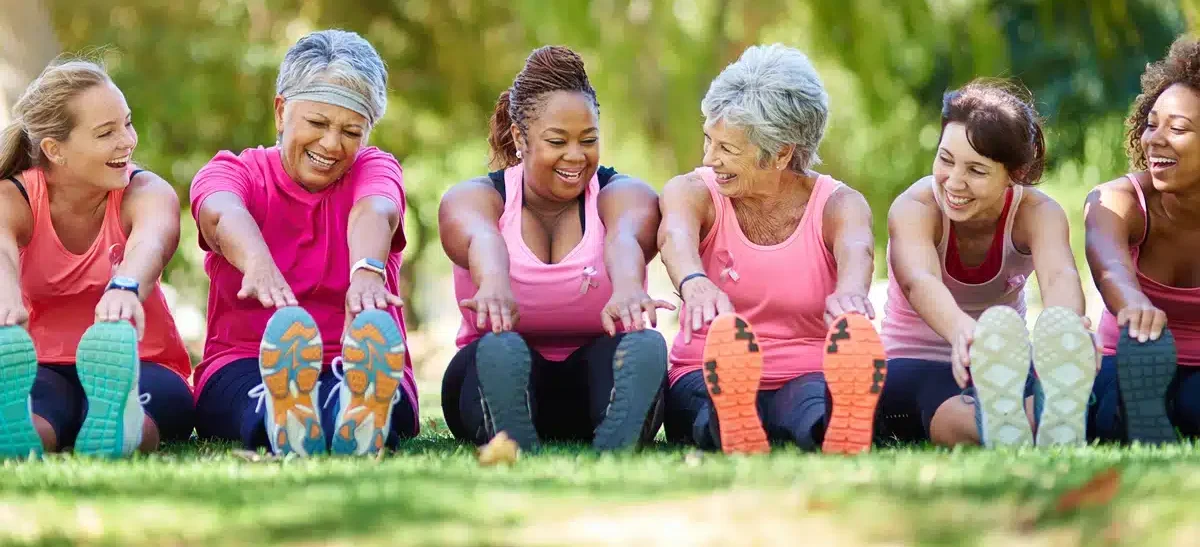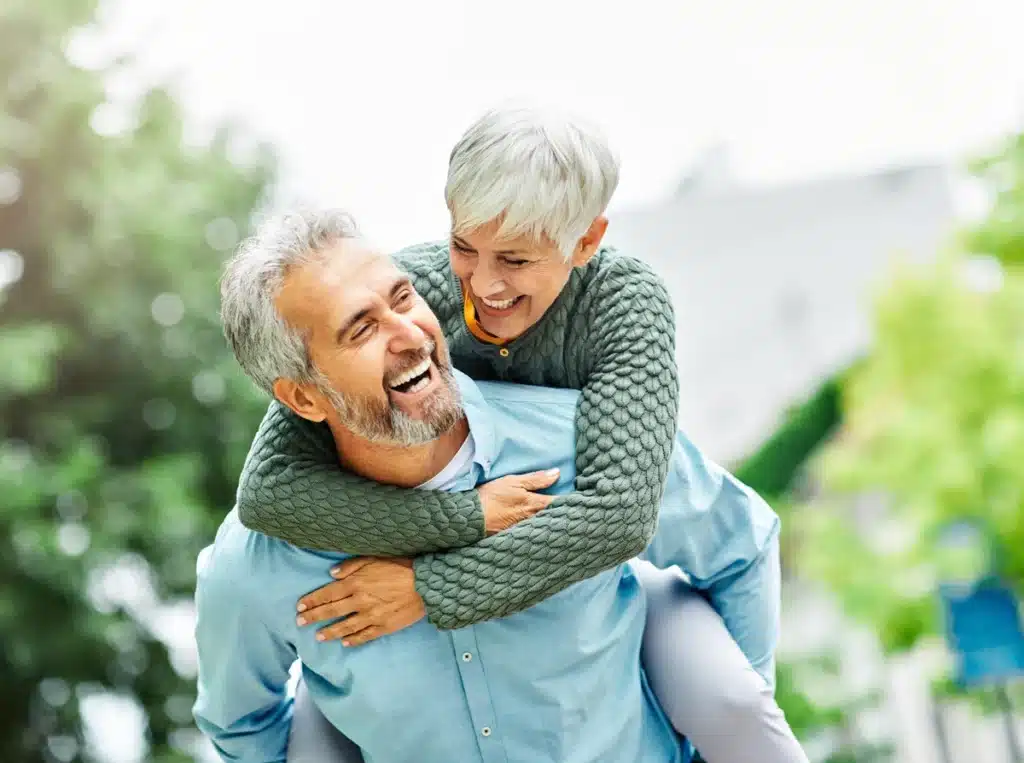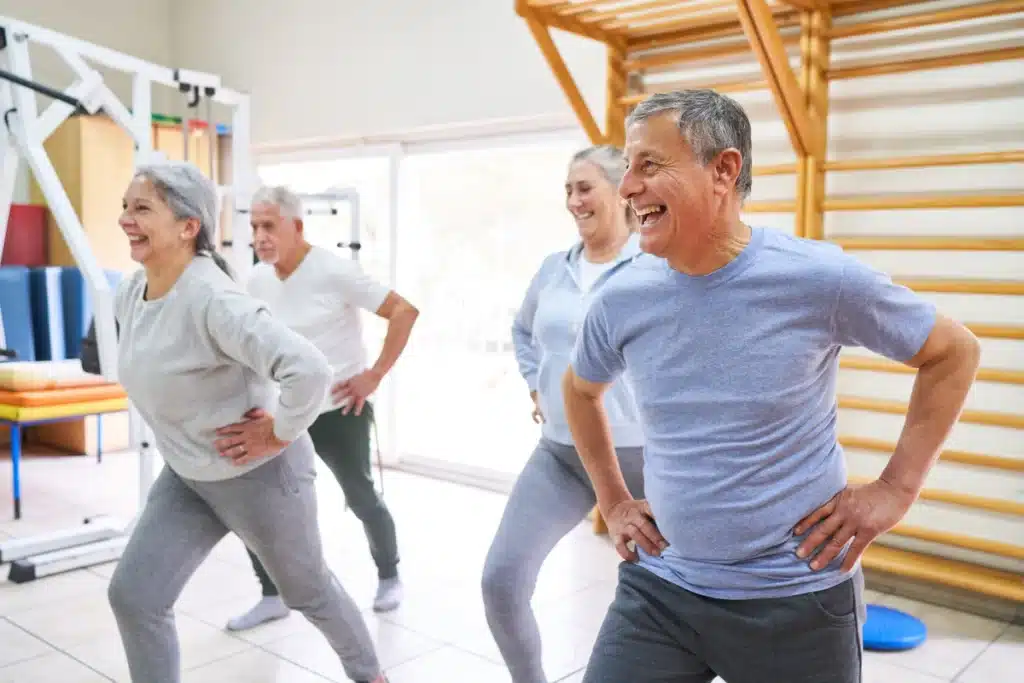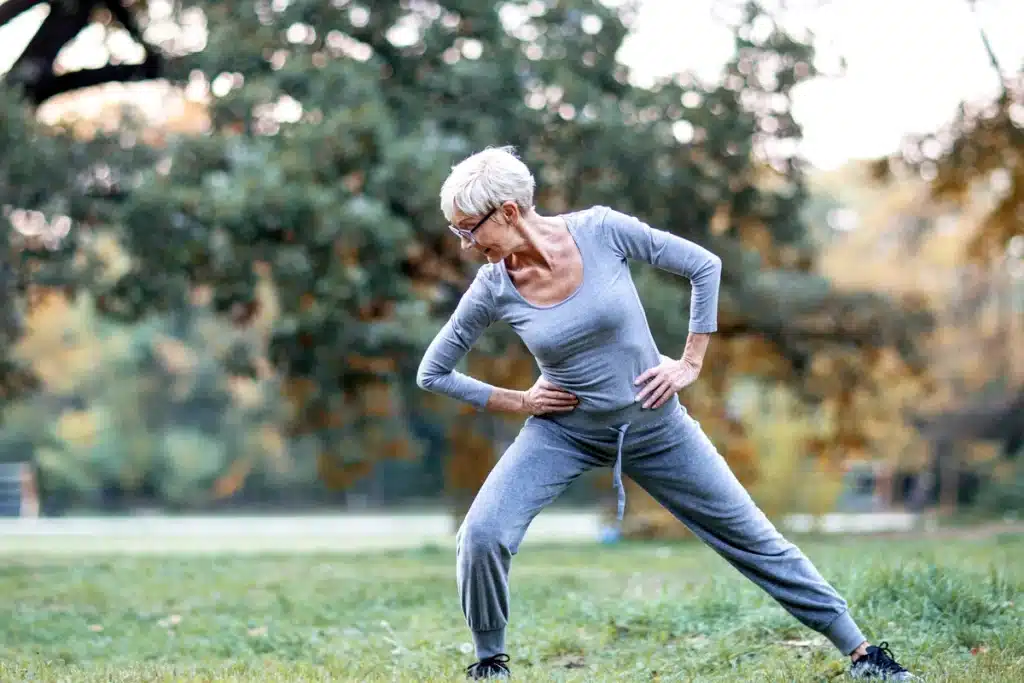As we age, maintaining strong and healthy legs becomes increasingly important for maintaining:
- Independence
- Mobility
- Quality of life
However, many seniors may find themselves facing challenges related to decreased leg strength, which can significantly impact their ability to perform daily activities and enjoy life to the fullest.
In this comprehensive guide, we’ll delve into the importance of leg strength for seniors, common reasons for its decline, the best leg strengthening exercises for seniors, how to find professional support in a quality living community, and the optimal frequency of exercise for seniors.
Why Leg Strength Matters for Seniors
Strong legs are the foundation of mobility and independence for people of all ages, but they become especially crucial for seniors. Here are some key reasons why leg strength is vital for older adults:
- Maintaining Independence: Strong legs enable seniors to perform essential activities of daily living, such as walking, climbing stairs, and getting up from a chair or bed, without assistance. This independence contributes to a higher quality of life and reduces the risk of falls and injuries.
- Preventing Falls: Weak leg muscles increase the risk of falls, which can have serious consequences for seniors, including fractures, head injuries, and loss of confidence. By strengthening the legs, older adults can improve balance and stability, reducing the likelihood of falls.
- Enhancing Mobility: Strong legs facilitate better mobility and agility, allowing seniors to engage in a wide range of physical activities and recreational pursuits. Whether it’s taking a leisurely stroll in the park or participating in group exercise classes, having strong legs promotes an active lifestyle.
- Supporting Joint Health: Strong leg muscles help support and stabilize the joints, such as the knees and hips, reducing the risk of osteoarthritis and other degenerative conditions. By maintaining muscle strength, seniors can alleviate joint pain and stiffness, improving overall comfort and mobility.
Common Reasons for Loss of Leg Strength
Understanding the factors that contribute to the decline in leg strength among seniors can help identify strategies for prevention and intervention. Here are some common reasons why older adults may experience weakening of the leg muscles:
- Sedentary Lifestyle: Lack of physical activity and prolonged periods of sitting or lying down can lead to muscle atrophy and loss of strength, particularly in the legs.
- Age-Related Muscle Loss: As we age, we experience a natural decline in muscle mass and strength, known as sarcopenia. This age-related muscle loss can affect the legs, making them weaker and more prone to fatigue.
- Chronic Health Conditions: Certain medical conditions, such as arthritis, diabetes, and peripheral vascular disease, can affect leg strength and mobility. Pain, inflammation, and reduced circulation may contribute to muscle weakness and impaired function.
- Inactivity After Injury or Surgery: Recovery from an injury or surgical procedure often requires periods of immobilization or reduced activity, which can result in muscle weakness and loss of function in the legs.
The 6 Best Exercises for Leg Strengthening
Fortunately, there are a variety of exercises that seniors can incorporate into their fitness routine to strengthen their leg muscles and improve overall lower body function. These exercises target different muscle groups and can be modified to suit individual needs and abilities. Here are some of the best leg strengthening exercises for seniors:
1) Squats
Squats are a compound exercise that targets the quadriceps, hamstrings, glutes, and calves. Begin by standing with your feet shoulder-width apart, then lower your body as if you were sitting back into a chair, keeping your knees behind your toes. Aim to lower yourself until your thighs are parallel to the ground, then push through your heels to return to the starting position. Perform 2-3 sets of 10-15 repetitions.
2) Lunges
Lunges are another effective lower body exercise that works multiple muscle groups, including the quadriceps, hamstrings, glutes, and calves. Start by standing with your feet together, then take a large step forward with one foot and lower your body until both knees are bent at a 90-degree angle. Keep your front knee aligned with your ankle and your back knee hovering just above the ground. Push through your front heel to return to the starting position, then repeat on the opposite side. Aim for 2-3 sets of 10-12 repetitions on each leg.
3) Step-Ups
Step-ups target the quadriceps, hamstrings, and glutes while also improving balance and coordination. Begin by standing in front of a sturdy step or bench, then step up onto the platform with one foot, pressing through your heel to lift your body up. Bring your opposite foot up to meet the first foot, then step back down with the same foot leading. Alternate legs with each repetition, and aim for 2-3 sets of 10-12 step-ups on each leg.
4) Calf Raises
Calf raises isolate the calf muscles and help improve ankle stability and strength. Stand with your feet hip-width apart and your hands resting on a stable surface for support, such as a chair or wall. Lift your heels off the ground as high as you can, then lower them back down to the starting position. Perform 2-3 sets of 15-20 repetitions.
5) Leg Press
If access to a leg press machine is available, this exercise can be an effective way to strengthen the lower body muscles with added resistance. Sit in the leg press machine with your feet shoulder-width apart on the platform, then push through your heels to extend your legs and lift the weight. Slowly lower the weight back down until your knees are bent at a 90-degree angle, then repeat for 2-3 sets of 10-12 repetitions.
6) Resistance Band Exercises
Resistance bands are a convenient and versatile tool for strengthening the legs without the need for heavy equipment. Exercises such as leg extensions, leg curls, and lateral leg raises can all be performed using resistance bands to target different muscle groups.
How to Find a Physical Therapist or Coach
For seniors who are new to exercise or have specific health concerns or limitations, working with a physical therapist or certified personal trainer can provide valuable guidance and support. Here are some tips for finding a qualified professional to help you with your leg strengthening journey:
Ask for Recommendations 👍
Seek recommendations from your primary care physician, friends, or family members who have worked with physical therapists or trainers specializing in senior fitness.
Research Credentials 💻
Look for professionals who have experience working with older adults and hold relevant certifications, such as Certified Strength and Conditioning Specialist (CSCS), Certified Exercise Physiologist (CES), or Certified Personal Trainer (CPT).
Schedule Consultations 🗓️
Once you’ve identified potential candidates, schedule consultations to discuss your goals, health history, and any specific concerns or limitations you may have. This initial meeting will help you determine if the professional is the right fit for your needs.
Consider Accessibility 🚘
Choose a physical therapist or trainer who is conveniently located and offers flexible scheduling options to accommodate your preferences and lifestyle.
Ask About Experience 🏋️♀️
Inquire about the professional’s experience working with seniors and their familiarity with common age-related conditions and limitations. A knowledgeable and compassionate approach is essential for effective and safe training.
How Often Should Seniors Exercise?
The frequency and intensity of exercise for seniors should be tailored to individual abilities, goals, and health status. While regular physical activity is essential for maintaining overall health and function, it’s important to strike a balance between challenging oneself and avoiding overexertion or injury. Here are some general guidelines for exercise frequency for seniors:
- Cardiovascular Exercise: Aim for at least 150 minutes of moderate-intensity aerobic activity, such as brisk walking, cycling, or swimming, spread throughout the week. This equates to about 30 minutes of exercise on most days of the week.
- Strength Training: Incorporate strength training exercises for the major muscle groups, including the legs, at least two days per week. Allow for adequate rest between sessions to allow for muscle recovery and adaptation.
- Flexibility and Balance: Include flexibility and balance exercises, such as yoga or tai chi, on a regular basis to improve range of motion, joint stability, and coordination. Aim for 2-3 sessions per week to reap the benefits of these activities.
- Listen to Your Body: Pay attention to how your body responds to exercise and adjust your routine accordingly. If you experience pain, discomfort, or fatigue, take a break and consult with a healthcare professional if necessary.
- Stay Consistent: Consistency is key to reaping the benefits of exercise, so aim to establish a regular routine that you enjoy and can maintain over the long term. Remember that even small amounts of physical activity can add up and contribute to improved health and well-being.
Leg Exercises and More, Tailored to Your Needs
Maintaining strong and healthy legs is essential for seniors to preserve independence, mobility, and overall quality of life. By incorporating a variety of leg strengthening exercises into their fitness routine, working with qualified professionals as needed, and adhering to a regular exercise schedule, older adults can enhance their physical function, reduce the risk of falls and injuries, and enjoy an active and fulfilling lifestyle well into their golden years. With dedication, consistency, and proper guidance, seniors can build strong foundations for a vibrant and independent future.
If you’re looking for a supportive community that will help keep you strong and active, Sunflower Communities is right for you! Contact us today to learn more!




